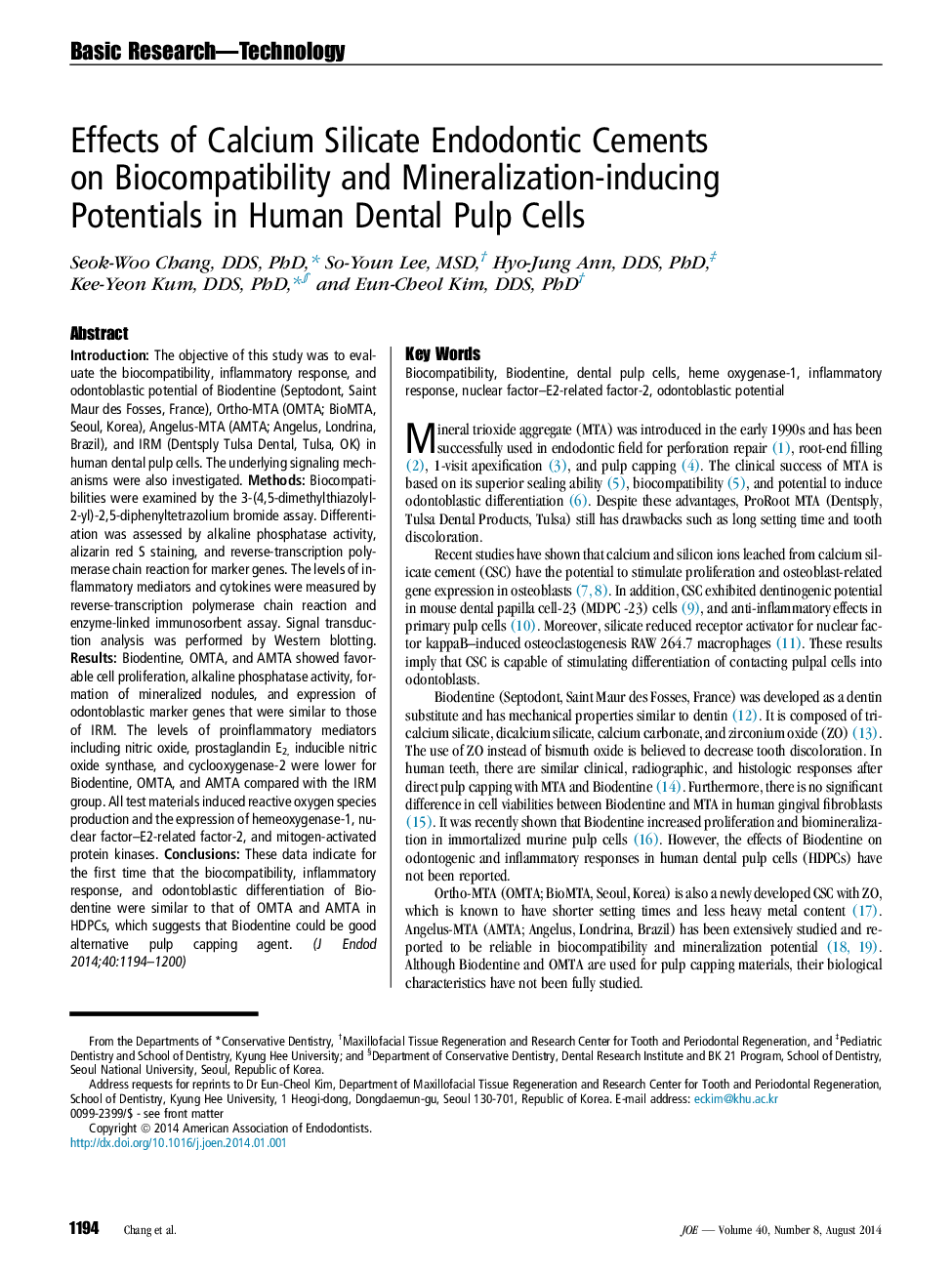| Article ID | Journal | Published Year | Pages | File Type |
|---|---|---|---|---|
| 3146749 | Journal of Endodontics | 2014 | 7 Pages |
IntroductionThe objective of this study was to evaluate the biocompatibility, inflammatory response, and odontoblastic potential of Biodentine (Septodont, Saint Maur des Fosses, France), Ortho-MTA (OMTA; BioMTA, Seoul, Korea), Angelus-MTA (AMTA; Angelus, Londrina, Brazil), and IRM (Dentsply Tulsa Dental, Tulsa, OK) in human dental pulp cells. The underlying signaling mechanisms were also investigated.MethodsBiocompatibilities were examined by the 3-(4,5-dimethylthiazolyl-2-yl)-2,5-diphenyltetrazolium bromide assay. Differentiation was assessed by alkaline phosphatase activity, alizarin red S staining, and reverse-transcription polymerase chain reaction for marker genes. The levels of inflammatory mediators and cytokines were measured by reverse-transcription polymerase chain reaction and enzyme-linked immunosorbent assay. Signal transduction analysis was performed by Western blotting.ResultsBiodentine, OMTA, and AMTA showed favorable cell proliferation, alkaline phosphatase activity, formation of mineralized nodules, and expression of odontoblastic marker genes that were similar to those of IRM. The levels of proinflammatory mediators including nitric oxide, prostaglandin E2, inducible nitric oxide synthase, and cyclooxygenase-2 were lower for Biodentine, OMTA, and AMTA compared with the IRM group. All test materials induced reactive oxygen species production and the expression of hemeoxygenase-1, nuclear factor–E2-related factor-2, and mitogen-activated protein kinases.ConclusionsThese data indicate for the first time that the biocompatibility, inflammatory response, and odontoblastic differentiation of Biodentine were similar to that of OMTA and AMTA in HDPCs, which suggests that Biodentine could be good alternative pulp capping agent.
